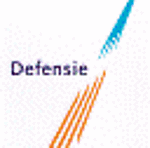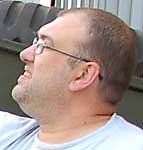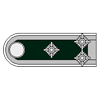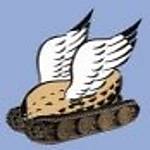
The gap is too wide to close with finger pressure, gluing, or putty, so I turned to some sheet styrene to solve the problem. I had to add two pieces of 0.5mm thick styrene, one to the bulkhead itself and the other to the engine compartment cover. A third piece of 0.3mm was added to the engine compartment cover to close the deal. This solution was necessary because I couldn't increase the thickness of the area of the bulkhead where it needed to fit into the notch on the superstructure.

I also added the front hull details for the glacis including the access hatch over the driver's position and the two blackout lights. The access hatch is a real challenge to install at this stage because it has to be inserted from the bottom to fit properly, installing it back when the nose was still separate would've been so much easier, so I'm not sure why it was left until Step 9 in the instructions.
Locating the two blackout lights in the correct spot is a bit of a challenge as the instructions are somewhat vague in exactly where they should be mounted. The french-style light had to be removed and relocated a little further down the glacis once a test fit with the gun mantlet showed it would interfere with the mantlet, so the resulting glue scar had to be sanded down carefully to repair the damage. I also had to cut down the tab on the top of the post that inserted into the light itself as it was too tall and wide to fit into the slot provided. The second armored vent cover is molded with a mount post as well but it too was too long, so I removed it completely and just glued the vent directly into position.

With that taken care of, the three modular elements of lower hull, upper hull and fighting compartment, and the gun were ready for paint.

I applied an initial coat of Model Master Italian Dark Brown as a primer coat. This was followed by a base coat of a mix of 80/20 Dunkelgelb/Light Gray. I went ahead and painted the exterior surfaces and the lower hull/suspension as a foundation for additional work even though some would likely have to be repainted after installation.

With that out of the way, the lower hull interior was dealt with first. Since all of the driver's station area will not be visible after everything is installed, I left it alone and focused on the portions only that would be visible from the fighting compartment. I detailed the radiator and drive shaft and weathered the floor. The floor was treated with washes of Gunmetal and Burnt Umber and then dry brushed with the previous Dunkelgelb/Light Gray mix. I also prepped the suspension by painting the road wheels and return rollers with non-buffing Metalizer Gunmetal and then dry-brushed it with Steel to simulate those bare steel surfaces.

The superstructure was joined with the lower hull. Step 9 of the instructions curiously directs not to do this by gluing, presumably just allowing it to snap into place. I ignored this of course and glued it into position. No matter how I tried though, I couldn't get the front corners to line up properly with the front plate although I did try several different methods, but each one caused the superstructure to separate from the lower hull...so putty was the ultimate solution.

As a way to test the fit of the tracks, I constructed a small length of 15 links and used it to test clearance on the idlers, sprockets, and return rollers with the fenders. The front fenders had a small step that I sanded down carefully and once that was removed, there was enough clearance. The rear fenders also had to be sanded down for the same reason, otherwise the fenders would sit directly on the links. With that solved, I installed the front fenders and used putty to close the small gaps present between them and the superstructure, the hull sides, and the fender extensions (yes there really were gaps in all three places!).

The last step was to glue the gun and mantlet into position. This is a tough installation because of the weight of the gun and the fact that it's only a small pin that fits into the base inside the mount that supports everything. Careful use of glue and holding things in position for a few minutes as it grabbed hold were necessary as well as propping up the barrel with a paint jar for about 30 minutes. Eventually the glue held though and it was ready to go back out to the paint booth. I used strips of blue painter's tape to mask the interior and the lower hull/suspension.

I painted the fenders first and touched up areas where the paint was a little worse for wear and then applied the camo pattern. Rather than follow the vague representations on the kit supplied finishing guide, I instead went with a design closer to that on the box top. I applied the green pattern using Model Master enamel Khaki free-hand. Over spray was fixed using the lightened dunkelgelb mix from earlier and then a very light misting of the dunkelgelb applied overall to fade and blend everything back together.

The tracks will come next followed by the pioneer tools and such to round things out.





































































